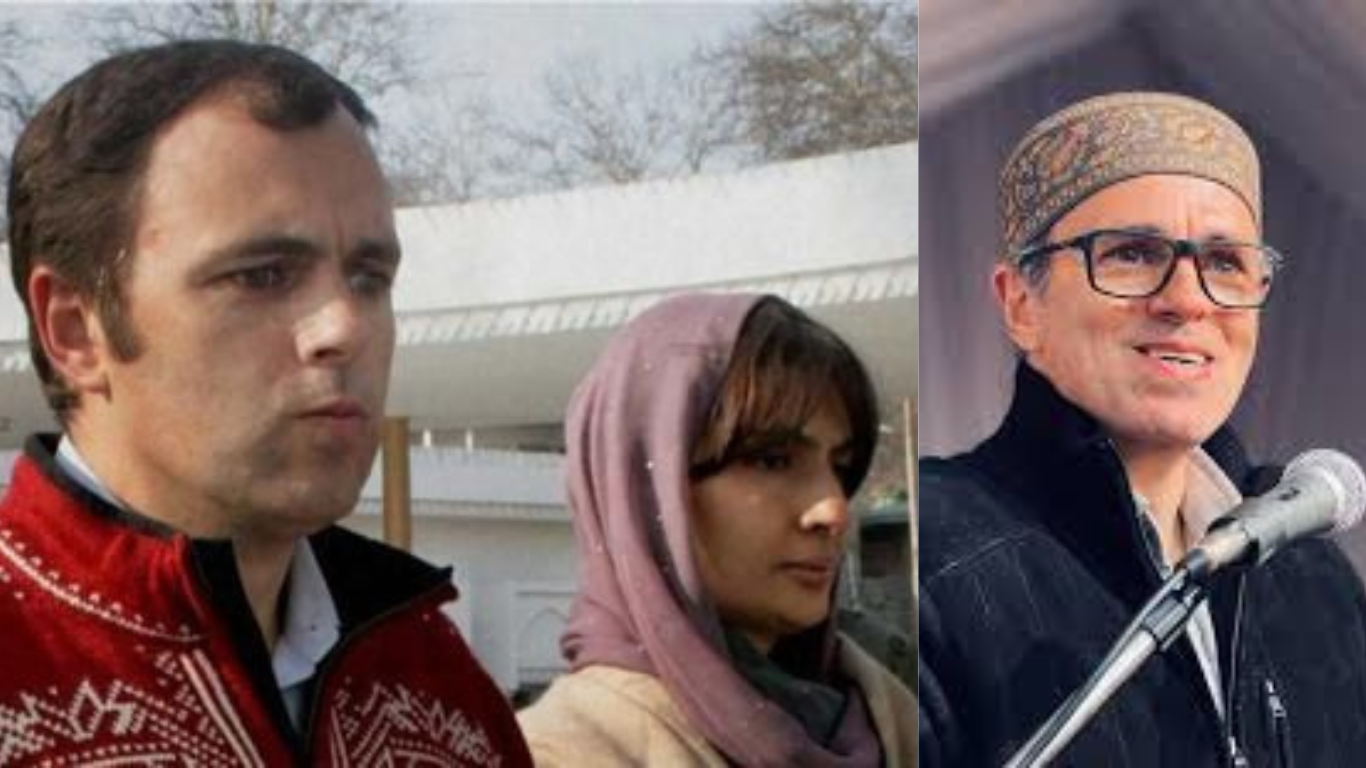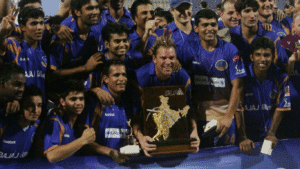The saga of Omar Abdullah vs Payal Abdullah has captured public attention in India, blending personal drama with legal intricacies. As a prominent political figure and former Chief Minister of Jammu and Kashmir, Omar Abdullah’s life has often been under scrutiny. His ongoing divorce proceedings with his estranged wife, Payal Abdullah, have added a new chapter to his public narrative, raising questions about marriage, separation, and the role of the judiciary in personal disputes. Whether you’re a follower of Indian politics, a legal enthusiast, or simply curious about this high-profile case, this guide offers a thorough exploration of their story.
In this blog post, we’ll dive into the timeline of their relationship, the legal grounds for their dispute, key court rulings, financial implications, and the broader societal context. We’ll also examine how this case reflects on issues like divorce laws in India and the intersection of personal and public life for political figures. By the end, you’ll have a clear understanding of the “Omar Abdullah vs Payal Abdullah” case and its significance. Let’s get started!
Who Are Omar Abdullah and Payal Abdullah?
Omar Abdullah: The Political Luminary
Omar Abdullah is a name synonymous with Jammu and Kashmir’s political landscape. Born on March 10, 1970, in Rochford, England, he hails from the influential Abdullah family. His grandfather, Sheikh Abdullah, was a towering figure in Kashmir’s history, founding the National Conference (NC), while his father, Farooq Abdullah, served multiple terms as Chief Minister. Omar himself rose to prominence as the Chief Minister of Jammu and Kashmir from 2009 to 2015, becoming one of India’s youngest state leaders at the age of 38. As the NC’s vice president, he remains a key player in regional politics, especially after leading his party to victory in the 2024 assembly elections.
Payal Abdullah: The Private Figure
Payal Abdullah (née Nath) is less known in the public sphere but has been thrust into the spotlight due to this case. Born into a well-to-do family—her father was a retired army officer—she married Omar in 1994. While not a public figure like her husband, Payal has maintained a dignified presence throughout their separation, focusing on raising their two sons, Zahir and Zamir. Her role in this legal battle has highlighted her resilience and legal acumen as she navigates the complexities of their dispute.
Their Marriage
Omar and Payal tied the knot on September 1, 1994, in a union that blended political legacy with personal commitment. For 17 years, they appeared to lead a stable family life, raising two boys born in the late 1990s and early 2000s. However, cracks emerged over time, leading to their separation in 2009—a turning point that set the stage for the “Omar Abdullah vs Payal Abdullah” legal saga.
The Breakdown: From Marriage to Separation
The Separation Announcement
In 2011, Omar Abdullah publicly confirmed his separation from Payal after 17 years of marriage. The couple had been living apart since 2009, a fact that became evident when Payal remained in Delhi with their sons while Omar focused on his political career in Jammu and Kashmir. The announcement marked the end of their conjugal relationship, though the legal dissolution of their marriage would prove far more complex.
Reasons for the Split
While neither party has disclosed detailed personal reasons, court documents and public statements provide some insight. Omar has cited “cruelty” and an “irretrievable breakdown of marriage” as grounds for divorce, alleging that Payal’s conduct caused him emotional distress. Payal, in contrast, has contested these claims, arguing that Omar failed to substantiate them with evidence. The lack of specific public details reflects the private nature of their rift, though speculation about political pressures, lifestyle differences, and family dynamics has swirled in media circles.
The Legal Battle: Omar Abdullah vs Payal Abdullah
Initial Divorce Petition (2013)
The legal chapter of “Omar Abdullah vs Payal Abdullah” began in 2013 when Omar filed for divorce in a Delhi family court under the Special Marriage Act, 1954. He sought dissolution on two primary grounds:
- Cruelty: Alleging that Payal’s behavior—such as refusing to relocate to Kashmir during his political tenure—amounted to mental cruelty.
- Irretrievable Breakdown: Claiming the marriage was beyond repair, with no conjugal relationship since 2007 and physical separation since 2009.
Payal opposed the petition, denying the allegations and asserting that their separation stemmed from mutual decisions rather than her unilateral actions.
Family Court Ruling (2016)
On August 30, 2016, the Delhi Family Court, presided over by Principal Judge Arun Kumar Arya, dismissed Omar’s plea. The court found:
- Insufficient Evidence: Omar’s claims of cruelty were “vague and unacceptable,” lacking specific incidents or proof.
- No Breakdown Proven: Despite their long separation, the court ruled that Omar couldn’t demonstrate an irretrievable breakdown sufficient to warrant divorce under existing law.
- Mutual Contact: Evidence showed the couple remained in touch until the filing, undermining claims of total estrangement.
This ruling marked the first setback for Omar in the “Omar Abdullah vs Payal Abdullah” case, prompting an appeal.
Delhi High Court Appeal (2023)
Unconvinced, Omar escalated the matter to the Delhi High Court in 2016, challenging the family court’s decision. After years of delays, a division bench of Justices Sanjeev Sachdeva and Vikas Mahajan delivered their verdict on December 12, 2023:
- Upholding the Lower Court: The High Court found “no infirmity” in the family court’s reasoning, agreeing that cruelty allegations were unsubstantiated.
- Key Observations: The bench noted that Omar’s claims—like Payal’s refusal to move to Kashmir in 2002—were tied to practical considerations (e.g., children’s education, security concerns) rather than marital discord.
- Dismissal: The appeal was dismissed, reinforcing that Omar failed to meet the legal threshold for divorce under the Special Marriage Act.
Supreme Court Intervention (2024)
Undeterred, Omar approached the Supreme Court in 2024, filing a Special Leave Petition. Key developments include:
- July 15, 2024: Justices Sudhanshu Dhulia and Ahsanuddin Amanullah issued a notice to Payal, seeking her response within six weeks. Omar’s counsel, Senior Advocate Kapil Sibal, argued that the marriage was “dead” after 15 years of separation, urging the court to invoke Article 142 (to do complete justice) for a divorce decree.
- August 30, 2024: Both parties agreed to mediation at the Supreme Court Mediation Centre to explore a settlement. The court deferred the hearing to November 4, 2024, awaiting the mediator’s report. Sibal clarified that mediation aimed at resolving disputes, not reconciling the marriage.
As of March 31, 2025, the case remains pending, with mediation outcomes yet to be publicized, making “Omar Abdullah vs Payal Abdullah” an ongoing legal narrative.
Financial Disputes: Maintenance and Support
Maintenance Plea (2016)
Parallel to the divorce proceedings, Payal filed for maintenance under Section 125 of the Code of Criminal Procedure (CrPC) in 2016, seeking financial support for herself and their sons. This added another layer to the “Omar Abdullah vs Payal Abdullah” dispute.
- Family Court Order (2018): The court granted Payal interim maintenance of Rs. 75,000 per month and Rs. 25,000 per month for one son (until he reached majority). The second son had already attained majority, limiting his eligibility.
Delhi High Court Revision (2023)
Dissatisfied, Payal and her sons appealed to the High Court, arguing the amount was insufficient given Omar’s financial status. On August 31, 2023, Justice Subramonium Prasad ruled:
- Increased Maintenance: Omar was directed to pay Rs. 1.5 lakh per month to Payal, reflecting his “lavish lifestyle” (e.g., international travel, luxury hotel stays).
- Educational Support: Rs. 60,000 per month per son for their law college expenses, despite their majority, acknowledging Omar’s duty as a father.
- Rationale: The court noted Payal’s burden of funding the children’s education alone and Omar’s capacity to provide a standard of living commensurate with his wealth.
This ruling underscored the financial stakes in “Omar Abdullah vs Payal Abdullah,” highlighting disparities in their post-separation circumstances.
Key Issues in the Case
Grounds for Divorce in India
The “Omar Abdullah vs Payal Abdullah” case spotlights India’s divorce laws under the Special Marriage Act:
- Cruelty: Requires specific, provable acts of physical or mental harm—vague allegations don’t suffice.
- Irretrievable Breakdown: Not a standalone ground in India (unlike some countries), complicating Omar’s plea despite their long separation.
The judiciary’s conservative stance reflects a cultural reluctance to dissolve marriages without clear evidence, a point of contention in this case.
Public vs. Private Life
As a public figure, Omar’s personal struggles amplify the “Omar Abdullah vs Payal Abdullah” narrative. Political opponents and media have speculated on how this affects his credibility, though he’s maintained that personal matters shouldn’t overshadow his public role.
Children’s Role
Zahir and Zamir, now adults studying law, live with Payal in Delhi. Court records show Omar has access to them, countering claims of estrangement. Their inclusion in maintenance pleas underscores the familial stakes beyond the couple’s rift.
Timeline of Omar Abdullah vs Payal Abdullah
| Year | Event |
|---|---|
| 1994 | Omar and Payal marry on September 1. |
| 2009 | Couple separates; Payal stays in Delhi with sons, Omar moves to J&K. |
| 2011 | Omar publicly announces separation after 17 years of marriage. |
| 2013 | Omar files for divorce in Delhi Family Court, citing cruelty. |
| 2016 | Family Court dismisses divorce plea; Payal files maintenance petition. |
| 2018 | Family Court awards interim maintenance to Payal and one son. |
| 2023 | Delhi High Court dismisses Omar’s divorce appeal (Dec); increases maintenance (Aug). |
| 2024 | Supreme Court issues notice (July); orders mediation (Aug); case pending. |
Societal and Legal Implications
Divorce Law Reform
The “Omar Abdullah vs Payal Abdullah” case fuels debates on modernizing India’s divorce laws. Critics argue that the absence of “irretrievable breakdown” as a ground traps couples in dead marriages, while traditionalists defend the current framework to preserve familial stability.
Women’s Financial Rights
Payal’s successful maintenance claim highlights the judiciary’s role in ensuring financial equity post-separation, especially when one spouse (Omar) enjoys significant resources. It reinforces that maintenance isn’t just for destitution but for maintaining a comparable lifestyle.
Political Persona
For Omar, the case tests his public image. While he’s focused on restoring Jammu and Kashmir’s statehood post-2024 elections, this personal battle contrasts with his political narrative, prompting discussions on how private life influences leadership perception.
Comparing Omar Abdullah vs Payal Abdullah to Other Cases
Unlike celebrity divorces (e.g., Aamir Khan vs. Kiran Rao, amicably settled), “Omar Abdullah vs Payal Abdullah” is marked by prolonged litigation and contested claims. It mirrors cases like that of politician Atal Bihari Vajpayee’s adopted family disputes—personal matters intersecting with public roles—but stands out for its legal complexity and unresolved status.
Current Status (March 31, 2025)
As of now, the Supreme Court mediation process is underway, with no public updates since the August 2024 hearing deferment to November. The outcome—whether a settlement or continued litigation—remains uncertain, keeping “Omar Abdullah vs Payal Abdullah” in the spotlight.
Why This Case Matters
For readers, this case offers more than tabloid fodder. It’s a lens into:
- Legal Systems: How Indian courts navigate divorce and maintenance.
- Gender Dynamics: Balancing rights and responsibilities in marital disputes.
- Public Life: The challenges of privacy for political figures.
Whether you’re intrigued by law, politics, or human stories, “Omar Abdullah vs Payal Abdullah” encapsulates all three.
Conclusion
The “Omar Abdullah vs Payal Abdullah” legal battle is a multifaceted saga of love, separation, and justice. From their 1994 wedding to their 2024 mediation, it reflects personal struggles magnified by public scrutiny and legal rigor. As Omar fights for divorce and Payal secures financial support, their case underscores broader questions about marriage, duty, and law in India.
What’s your take—should long-separated couples like Omar and Payal be granted divorce more easily, or does the current system protect familial bonds? As the Supreme Court deliberates, this story continues to unfold, blending personal stakes with national interest.




